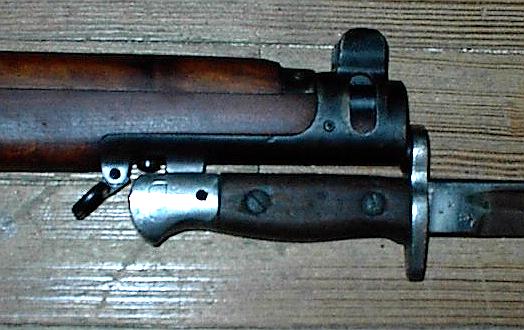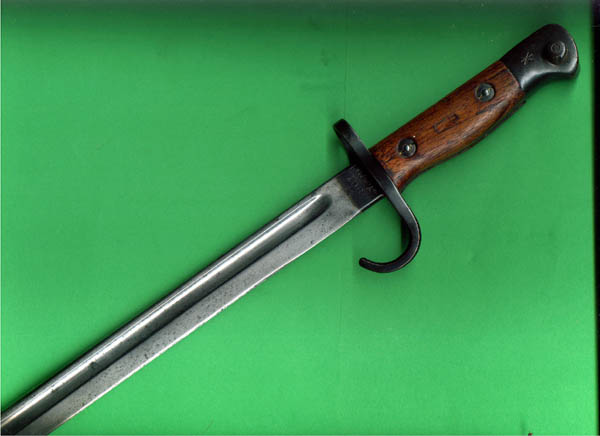Short Magazine Lee-Enfield Bayonet

This is a sword/knife - too short for a sword, too long for a knife - manufactured to fit the Short Magazine
Lee-Enfield No.1 series Infantry Rifles used during WWI and WWII.
The are very basic in appearance and are not of the high quality stock of previously manufactured patterns.
The hilt incorporates a very basic steel "bird's head" pommel (with or without oil hole) with push-button/internal-spring
latch, steel crossguard. the grips are of wood and are usually held in place by two screw/nut assemblies.
All steel parts are usually blued.
The blade is a single-edge type, single fullered (both sides) and is usually found with the ricasso portion - if not
the entire blade - blued.
These are found in a number of variations with the most rare being the early "hooked quillon" type similar to the
Japanese Arisaka or Type 30.
Various British/Commonwealth proofs and manufacturer's marks are usually on the ricasso, both sides.
The scabbards are of blued steel-mounted (throat and drag only) black leather body, with a single round - or oval - "frog" stud.
This bayonet was the predecessor to the British Pattern 1913/14 and the US Model 1913/17 series.
These were also manufactured by a number of British & Commonwealth countries all distinctly marked with their own unique
markings, i.e., Australia will be marked by such manufacturers as Mangrovite; Lithgow - MA manufactured in Australia [Lithgow Arsenal],
Orange - OA, Manufactured in Australia, Orange Arsenal; Owens (also marked MA); Slazenger SLAZ; England with Sanderson
or Wilkinson; India with Rifle Factory Ishapore RFI, etc.
"SMLE"Short Magazine Lee-Enfield Infantry Rifle

Close-up view of bayonet attached to British Pattern 1907 No. 1 MkIII
"SMLE"Short Magazine Lee-Enfield Infantry Rifle


